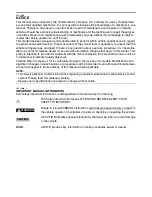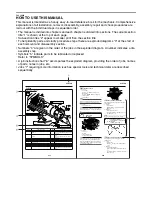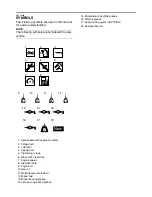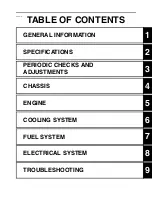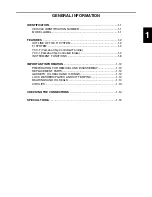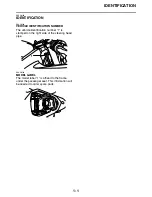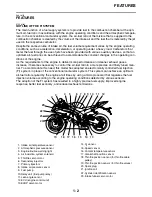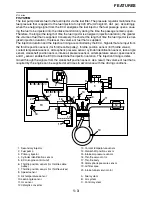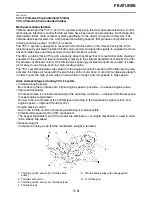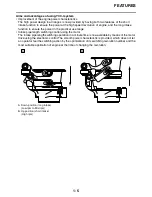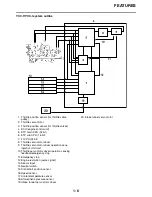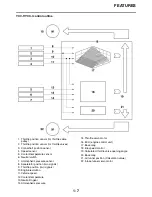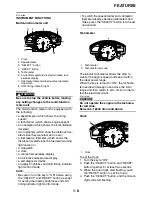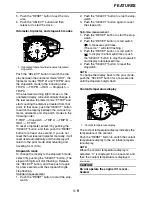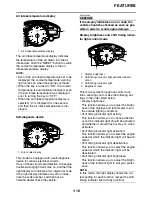
FEATURES
1-4
EAS4C81011
YCC-T (Yamaha Chip Controlled Throttle)
YCC-I (Yamaha Chip Controlled Intake)
Mechanism characteristics
Yamaha developed the YCC-T and YCC-I system employing the most advanced electronic control
technologies. Electronic control throttle systems have been used on automobiles, but Yamaha has
developed a faster, more compact system specifically for the needs of a sports motorcycle. The
Yamaha-developed system has a high-speed calculating capacity that produces computations of
running conditions every 1/1000th of a second.
The YCC-T system is designed to respond to the throttle action of the rider by having the ECU
instantaneously calculate the ideal throttle valve opening and generate signals to operate the motor-
driven throttle valves and thus actively control the intake air volume.
The ECU contains three CPUs with a capacity about five times that of conventional units, making it
possible for the system to respond extremely quickly to the slightest adjustments made by the rider.
In particular, optimized control of the throttle valve opening provides the optimum volume of intake
air for easy-to-use torque, even in a high-revving engine.
The YCC-I system calculates the value from the engine revolution number and throttle opening rate,
activates the intake air funnel with the electronic control motor drive to control the intake pipe length
in order to gain the high power output in all revolution ranges from low speeds to high speeds.
Aims and advantages of using YCC-T system
• Increased engine power
By shortening the air intake path, higher engine speed is possible
→
Increased engine power.
• Improved driveability
Air intake volume is controlled according to the operating conditions
→
Improved throttle response
to meet engine requirement.
Driving force is controlled at the optimal level according to the transmission gear position and
engine speed
→
Improved throttle control.
• Engine braking control
Due to the throttle control, optimal engine braking is made possible.
• Simplified idle speed control (ISC) mechanism
The bypass mechanism and ISC actuator are eliminated
→
A simple mechanism is used to main-
tain a steady idle speed.
• Reduced weight
Compared to using a sub-throttle mechanism, weight is reduced.
1. Throttle position sensor (for throttle cable
pulley)
2. Throttle servo motor
3. Throttle position sensor (for throttle valves)
4. Throttle valves
5. Throttle cable pulley with linkage guard
A. To throttle grip


